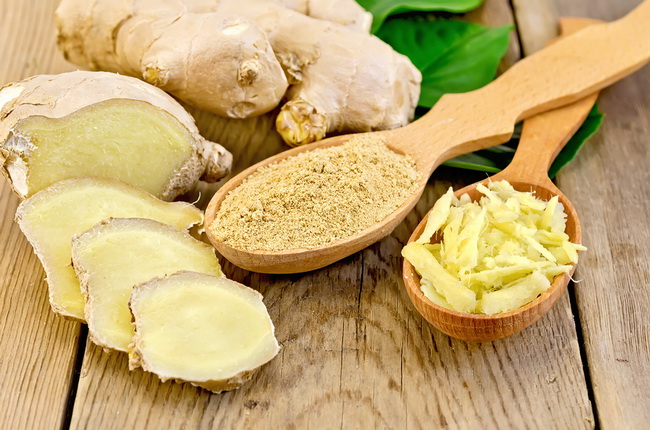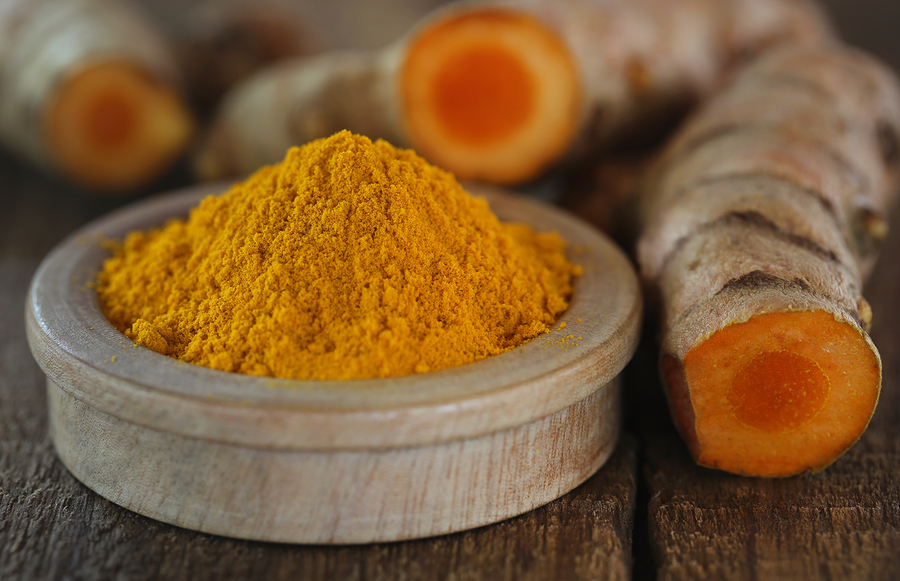- Make It Yourself Lavender Heart-Shaped Bath Bombs!
- 20 Things You Never Knew About “Down There”
- 12 Best Foods For Those Suffering From Arthritis Pain
- 12 Personal Hygiene Mistakes Almost Everyone Makes (Mom Never Told You About #4!)
- 15 Medicinal Plants And Herbs From The Cherokee People
- 12 Mind-Blowing Benefits Of Drinking Coconut Water During Pregnancy
- 12 Outstanding Winter Foods That Won’t Fatten You Up Like A Christmas Turkey
Ginger, Garlic, And Turmeric: The Superfood Trifecta

Photo credit: bigstock.com
For thousands of years, cultures all over the world have regarded certain foods as being imbued with healing and preventative properties. This wisdom was passed down from generation to generation, and while people reaped the benefits of these treatments, people didn’t know exactly why a given food was so healthy – they just knew it worked.
Today, we can apply modern science to studying these so-called “superfoods” and determine whether or not they really do live up the the traditional hype. In this article we’re going to explore three traditional healing foods that passed those tests with flying colors: ginger, turmeric and garlic.
1. Ginger
Ginger was first harvested in ancient China, and people quickly took note of the healing effects experienced by those who consumed it. It quickly spread across Asia, into the Middle East and Europe, and became of of the most popular spices in the world.
Ginger has a very distinct and powerful taste. Just a small piece can radically alter the taste of a dish or beverage. It can be served in chunks or thin slices (often seen with sushi) or ground into a powder for easy application as a spice. Some of the health benefits of ginger include:
- Decongesting and shortening colds: Try this the next time you have a cold: Peel an orange, and drop the peel into a pot of water. Slice up 1-2 ounces of raw ginger root and add to the pot (eat the orange for extra vitamin C). Bring water to a boil, then pour into a mug and drink as tea. A fair warning — this might be strongest and most intense tea you’ll ever drink. The mere aroma of this concoction may be enough clear out your congestion right away. Do not be surprised if your cold goes away within a day or so of drinking a few glasses of this.
- Fights Inflammation: Ginger has potent anti-inflammatory properties which help smooth muscle soreness and joint pain. Even chronic conditions like arthritis be be alleviated to a degree with the help of ginger.
- Treats Nausea: Did your grandmother ever tell you drink a glass of ginger ale to treat a queasy stomach? There’s a reason for that. Ginger has been proven to provide relief for many common stomach and intestinal ailments, even full-blown nausea. One study showed ginger to be more effective at treating motion sickness than the drug Dramamine. Ginger has even been shown to treat chemotherapy-induced nausea.
- Improved Memory: A joint Thai-American study with ginger extract showed marked improvement in memory and cognition among middle-aged female participants after two months of supplementation. These are very encouraging findings for health-conscious individuals who want to keep their minds sharp as they get older.
- Lower Blood Sugar: This is welcome news for people with diabetes. A study funded by the Tehran University of Medical Sciences showed that ground ginger was able to lower blood sugar by up to 12 percent in participants with Type 2 diabetes.
Continue to Page 2

Photo credit: bigstock.com
2. Garlic
Garlic is one of the most popular flavors in the world, used from China all the way to Europe and beyond. A member of the onion family, garlic plants form “bulbs” which are further divided into cloves. Raw garlic has a very strong flavor, so it is most commonly used as an ingredient in dishes rather than something eaten on its own. Garlic has almost miraculous health properties, in some cases even stronger than pharmaceutical drugs. The health benefits of garlic are explained in detail below:
- Lower Blood Pressure: High blood pressure or hypertension is a very common problem, and contributes to potentially fatal health issues like heart attacks and strokes. Studies on the effectiveness of garlic extract produced astonishing results. Taking 600-1500 mg of garlic extract per day was just as effective at lowering blood pressure as the medication atenolol. Blood pressure medications often have unwelcome side effects, like erectile dysfunction in men, so this is certainly great news for those living with hypertension who want an alternative to normal treatments.
- Brain Protection: Studies have shown that antioxidants found in garlic can prevent Alzheimer’s disease and other forms of age-related dementia. Oxidative stress greatly contributes to the aging process and causes the mind to lose its edge sooner than it should. Eating a garlic-rich diet will help fight free radicals and prevent these debilitating conditions from forming.
- Garlic is a Nutrition Powerhouse: In addition to all those antioxidants, garlic is packed full of nutrients like vitamins C and B6, fiber, selenium, manganese, phosphorous, and more.
- Garlic can treat heavy metal toxicity: Exposure to heavy metals like lead often goes unnoticed for a long time, but it can cause serious health problems if left untreated. One study with garlic offers new hope for an effective treatment. A study was performed with employees of a car battery plant who had been exposed to lead in the course of their work. A group of the employees were given garlic extract instead of D-penicillamine, the traditional treatment for lead toxicity. The study showed that the group given garlic extract had blood toxicity levels 19 percent lower after four weeks, making it more effective than the D-penicillamine, without the risk of side effects.
Continue to Page 3

Photo credit: bigstock.com
3. Turmeric
Turmeric is a root that has become popular over the centuries as a spice and traditional medicine. Like garlic and ginger, turmeric also has a distinct flavor, and it is commonly used in Indian and Chinese cuisine. Most of the medicinal properties of the root are believed to be linked to curcumin, a compound found in turmeric which was been a plethora of health benefits, such as:
- Fighting Autoimmune Diseases: Studies with turmeric have demonstrated the root’s potential in treating symptoms related to AIDS. HIV spreads in the body when infected T-cells begin to multiply. Testing done with turmerin, a protein found in turmeric, showed that it could block HIV-infected T-cells from multiplying, and also enhance the effectiveness of the HIV medication AZT. While more research needs to be done, this shows potential as a future treatment.
- Relieves Joint Pain. Turmeric can relive pain and stiffness caused by conditions like arthritis.
- Improved Cardiovascular Health. Studies on curcumin, one of the active ingredients in turmeric, showed that it could lower cardiovascular risk factors and improve blood flow.
- Reversing Alzheimer’s Disease? You read that right. While it would be premature to call this a definitive “cure,” the findings from recent studies are very promising. Alzheimer’s patients were given turmeric powder capsules for a period of 12 weeks. After the trial, the patients showed significant improvement in their Alzheimer’s symptoms. While more testing needs to be done, it offers hope for a new class of treatments that could someday put an end to age-related cognitive decline.
READ ALSO: Best Superfoods to Improve Your Brain Power and Mental Clarity
Many so-called “superfoods” are fluff and hype. But turmeric, garlic, and ginger have stood the test of both time and scientific scrutiny. If you value your long term health and well-being, it’s time to look into adding more of these three incredible foods to your diet.
References:






























